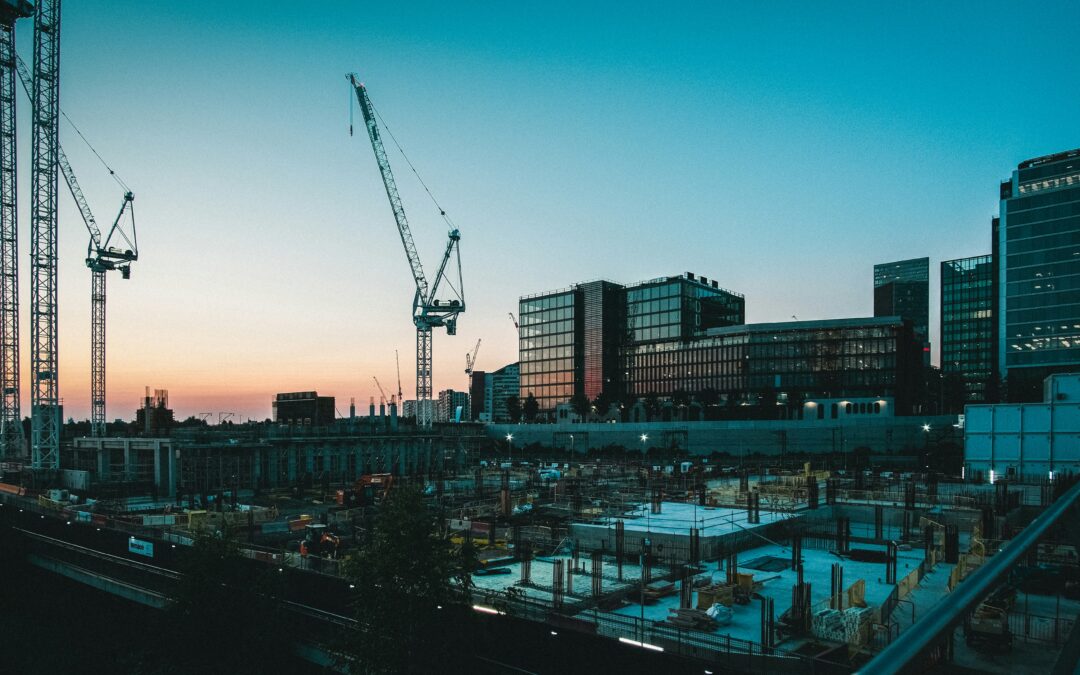This post explores the history of Building and current stresses and challenges
What Gives With the Building World?
It is filled with some of the most talented, creative and capable problem solvers in the world and yet, it is literally decades behind almost every other industry in adopting and successfully integrating technology. Subsequently building has been unsuccessful in doing what every other industry has accomplished year after year, creating demonstrably better performing products at a Lower cost.
I have looked at this conundrum for many years and historically there happens to be a lot of reasonable answers to that question. Every year those reasons are disappearing, which is why I have a high degree of confidence that in the next ten years, there will be a remarkable transformation in all areas of the building industry.
Building Pre Computers & Internet
But let’s not get ahead of ourselves, let’s start at the beginning.
In the beginning (defined as anytime pre-computers and internet) the entire building world labored at a significant disadvantage. It was unique in that “Building” has always been a truly virtual business. Every project was unique, being developed on a one-off basis. From financing, concept design, construction documentation, bidding, GC award, construction start-up, material procurement, construction, Regulatory review, project closeout ………information swirled between dozens of project participant. Everyone working earnestly to create or access the necessary information to successfully erect a unique building. The project would have a unique site and geology, within a unique regulatory environment, weather conditions and transportation access. All other manufacturing businesses or industries charged with creating a product labor under significantly better conditions. The products in aviation, automobiles, electronics, technology are always created in the controlled environment of the prime contractor or OEM (Original Equipment Manufacturer). Complex design and build manufacturing processes were able to access efficiencies due to this environmental control. minimizing or eliminating whole swathes of challenges (weather conditions, unique site conditions, geology variations, regulatory inconsistencies to name but a few).
The Unique Challenges of Building
There are quite a few characteristics of the building world we will be touching on, but for now I am going to focus on two additional unique characteristics that separates the building world from almost any other creative, product manufacturing process.
Building remains a “virtual business”. All data, decisions and documentation swirl between dozens of project team members including but not limited to: Owners, Architects, Engineers, Contractors, Specialty consultant, Regulators, Financiers… Then the actual product is typically constructed or assembled on a unique site, geographically distant from any of the main team members.
The historical and current building processes are uniquely flexible. Allowing changes during construction up to the very day of completion and continuing thereafter. It is difficult to imagine the impact on the current aviation, automobile, or electronic industries if this same level of flexibility was allowed. But it easy to imagine the potential improvement in quality, value and performance as well as price, if a building model evolved providing a more effective manufactured process while allowing for sufficient consumer choice.
The building industry has evolved within a litigious and competitive business environment in which transparency was often penalized. Construction has historically and remains today, a tightly controlled industry. Each business survives based on their ability to successfully manage litigation and operational risk, is dependent on said control. Transparent, open book operations are still a small part of the market. Traditional relationships often depend on various levels of obfuscation. Their intent is most often benign, focused on managing risk exposure and IP protection, to keep or establish a competitive edge.
BuildUSA’s Five Core Basic Changes
To modify industry behavior and create real change, the business model requires a minimum of five basic changes,
- The BCE & STWs: Technology tools need to be assembled to allow all team members to share data,
- Prototype Initiaitive: Given the virtual nature of building, the industry must develop and adopt a branded process, so every Owner and team member knows exactly how to behave regardless of the project or the team composition.
- Optimized Building: Market expectations will evolve to create opportunities for a growing number of building types to be designed, manufactured and assembled using standard building modules and process.
- The BCE & STWs: The structure of data must be standardized across all disciplines, so everyone uses the same content families and data codes.
- CAMs: A market of Construction Assembly Modules (CAMs) will increasingly be developed in the marketplace, and overtime will become the basis of design for more and more building types.
These items combined, will provide a foundation that will allow the industry to reverse its’ current paradigm and develop a business model capable of achieving BuildUSA’s mission to provide,
“Higher Quality, Higher Performance Buildings, delivered to market in a shorter period of time and at a lower cost.”
Photo by Samuel Regan-Asante on Unsplash
